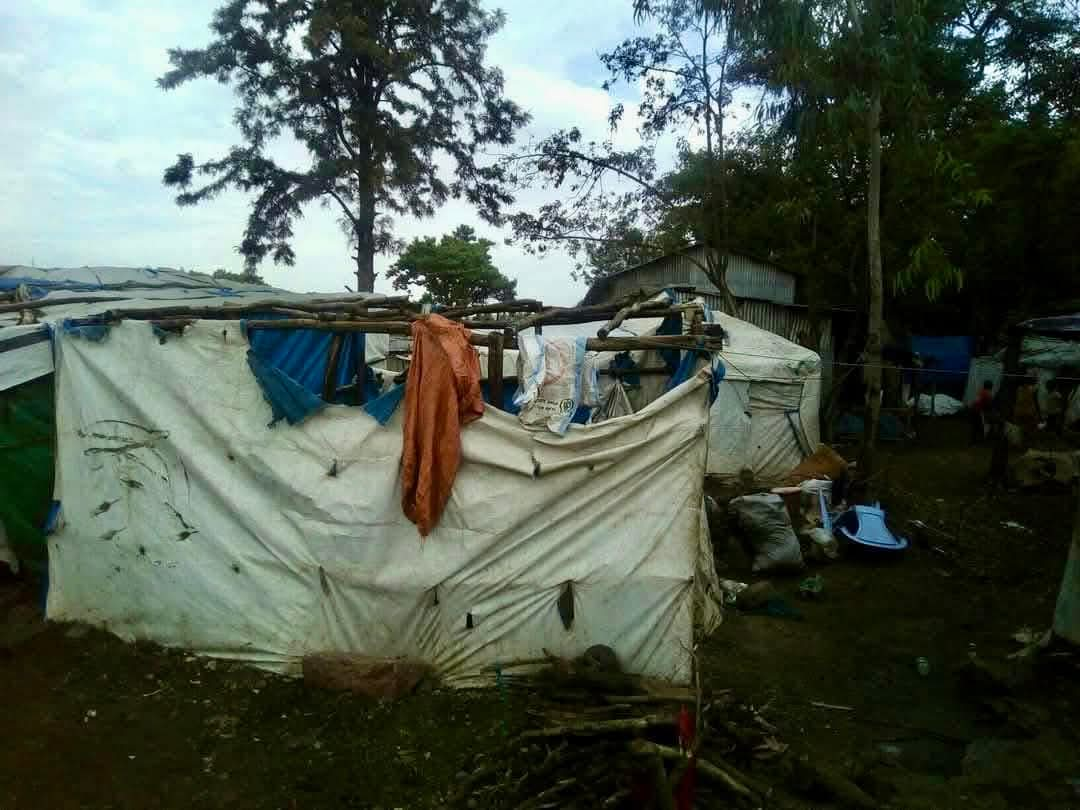Mekelle፡Telaviv, Nairobi, Pretoria, London, (Tigray Herald)
The Unholy Nexus of Two Evils: The PFDJ Regime and the TPLF Splinter Group
Prepared by: Consortium of Leading Regional and International Political, Intelligence, and Security Experts
This report exposes a dangerous and deeply troubling political realignment in the Horn of Africa:a covert alliance between remnants of the discredited Tigray People’s Liberation Front (TPLF)splinter group and the genocidal regime of Isaias Afwerki’s People’s Front for Democracy and Justice (PFDJ) in Eritrea.
This alliance is not a mere tactical maneuver—it is a calculated convergence driven by shareddesperation, authoritarian ambition, and mutual betrayal.
The report deconstructs the underlyingmotivations, assesses the geopolitical risks, and identifies both the beneficiaries and victims ofthis collusion.Above all, it serves as a strategic alert: the people of Tigray, Eritrean citizens, and the broaderHorn of Africa face renewed threats to peace, sovereignty, and justice if this alliance is permittedto evolve unchallenged.
- Historical Context: The PFDJ’s Genocidal Agenda Against Tigray
Isaias Afwerki’s hostility toward Tigray is not a recent development; it is a deeply embeddedcomponent of Eritrea’s state ideology. Since the 1980s, the PFDJ regime has pursued astrategy aimed at undermining Tigray’s revolutionary identity, democratic aspirations, andstrategic geographic influence.
Between 2020 and 2022, during the Tigray Genocide:
Over 78% of verified atrocities were committed by Eritrean forces under direct PFDJ command.76% of documented sexual violence cases against Tigrayan women were attributed to Eritreantroops.
Civilian infrastructure—including schools, hospitals, religious sites, and cultural heritage—wa ssystematically destroyed.
The so-called “Final Plan for Tigray,” devised by Isaias Afwerki and tacitly supported byelements within Ethiopia’s federal apparatus,Amhara extremist militias constituted a deliberate campaign of extermination—an attempt to erase Tigray’s political identity, cultural heritage, and demographic foundation.
- The Political Collapse of the TPLF Splinter Faction
Despite its authoritarian legacy, the TPLF once claimed to represent Tigrayanself-determination. In its fractured, post-genocide form, however, a splinter faction has opted forexpediency over justice—aligning itself with the very regime responsible for atrocities against itsown people.
This realignment represents:
A moral collapse: Collaborating with genocidaires is an unforgivable betrayal of the Tigrayannation.
A strategic failure:
No sustainable political future can be built upon the corpses of one’scommunity.
A revisionist assault:
Attempting to sanitize PFDJ’s crimes through political amnesia is an afrontto historical truth.
Motivated by revenge, personal immunity, and power consolidation, this faction is nowreportedly coordinating with Eritrean intelligence operatives.
- Strategic Motives: Who Benefits and Who Sufers?
Beneficiaries
For the PFDJ:
Proxy access: A foothold inside Tigray to disrupt its Interim Government and recovery eforts.Image laundering: Association with former Tigrayan elites as a means of reshaping international perception.
Political fragmentation:
Further weakening of Tigrayan unity, a long-standing PFDJ objective.
For the TPLF Splinter Group:
Short-term leverage: Support from Asmara to suppress reformist forces within Tigray.
Operational assistance: Potential access to Eritrean intelligence networks.External backing: Desperate dependence on foreign patronage after losing domestic legitimacy.
VictimsThe Tigrayan People:
First brutalized by invasion, now betrayed from within.
The Eritrean People:
Condemned to continued repression as their regime exports instability.
The Horn of Africa:
Thrust into deeper volatility by an axis of rogue actors bent on perpetuatingconflict.
- Strategic and Ethical Dilemmas
This alliance raises foundational questions:
How can a liberation movement’s descendants now conspire with the architect of their people’sgenocide?
What justification exists for partnering with a regime that raped, pillaged, and slaughteredacross Tigray?
Is this betrayal not more dangerous than war itself—because it masquerades as politicallegitimacy?
Can Tigrayan nationalism survive collusion with Isaias Afwerki?
What future can emerge from a political culture that normalizes betrayal?
- Isaias Afwerki’s Doctrine: Divide, Annihilate, Rule Isaias Afwerki’s geopolitical doctrine remains unchanged:
Eliminate threats: A functioning Tigray undermines Eritrea’s autocracy and regional mythology.
Strategic bufer: A collapsed Tigray serves as insulation against regional and internationalpressure.
Red Sea leverage: Chaos in northern Ethiopia boosts Eritrea’s perceived geopolitical value toGulf and Western actors.This alliance is not about reconciliation. It is the final phase of Isaias’s long war against Tigray.
- The Moral Degeneration of the TPLF Splinter Group
The betrayal is not only political—it is historical and moral:They have forsaken justice and nationalism.They have traded the blood of victims for fleeting political survival.They have chosen complicity over accountability.They have attempted to rewrite genocide into political opportunity.
This is not mere treason. It is a desecration of memory and a stain on the conscience of anation.
- Unyielding Truths for the Peoples of Tigray and Eritrea
Let the record reflect:
Who razed Axum.
Who turned churches into mass graves.Who starved civilians by blocking aid.
Who enslaved Eritrean youth in endless conscription.
Who celebrated acts of rape and murder.Those responsible are now the chosen partners of a morally bankrupt political clique.Truth must not be rewritten. Memory must not be erased. Justice demands resistance.
- Strategic Recommendations
- Diplomatic ActionMobilize urgent international condemnation of this alliance.Engage the AU, EU, and U.S. to politically and economically isolate both PFDJ and the TPLF splinter faction.
- Internal MobilizationLaunch public truth campaigns to expose the betrayal.
Strengthen security measures to counter infiltration by Eritrean-aligned operatives.3. Justice and AccountabilityAccelerate documentation of war crimes.
Prepare and submit legal dossiers to the ICC and UN Human Rights bodies.4. Civil Society and Diaspora Engagement




